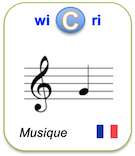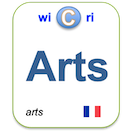Die Einheit von Theologie und Astronomie: Zur Visuellen Auseinandersetzung mit dem Kopernikanischen System bei Jesuitischen Autoren in der Ersten Hälfte des 17. Jahrhunderts
Identifieur interne : 000500 ( PascalFrancis/Corpus ); précédent : 000499; suivant : 000501Die Einheit von Theologie und Astronomie: Zur Visuellen Auseinandersetzung mit dem Kopernikanischen System bei Jesuitischen Autoren in der Ersten Hälfte des 17. Jahrhunderts
Auteurs : Volker R. RemmertSource :
- Archivum historicum Societatis Iesu [ 0037-8887 ] ; 2003.
Descripteurs français
- Pascal (Inist)
English descriptors
- KwdEn :
Abstract
Among the central themes of the so-called scientific revolution was the debate over the correct cosmological system. The Ptolemaic system, which had been the dominating explanation until the 16th century, was challenged in the 17th century principally by the heliocentric model proposed by Copernicus, and by the Tychonic model of Tycho Brahe which combined elements of the heliocentric and the geocentric systems. To facilitate comprehension, the different planetary theories were often depicted pictorially. During this period, frontispieces of astronomical publications fought the same debate visually. Jesuit astronomers had rejected the geocentric theory even before the prohibition of Copernicus's teachings in 1616. Frontispieces of three treatises, specifically Christoph Clavius's Opera mathematica (1612), Christoph Scheiner's Rosa Ursina (1630), and Giovanni Battista Riccioli's Almagestum novum (1651), testify to this rejection through the depiction of the unity of theological and astronomical argumentation. The author sets his interpretation of these frontispieces in the context of Biblical exegesis, a prerequisite for an understanding of the frontispiece of Clavius's Opera mathematica and of Riccioli's Almagestum novum.
Notice en format standard (ISO 2709)
Pour connaître la documentation sur le format Inist Standard.
| pA |
|
|---|
Format Inist (serveur)
| NO : | FRANCIS 527-04-10386 INIST |
|---|---|
| ET : | (The Unity of theology and astronomy: on the visual challenge with the copernic system in Jesuit authors in the first half of the 17th century) |
| GT : | Die Einheit von Theologie und Astronomie: Zur Visuellen Auseinandersetzung mit dem Kopernikanischen System bei Jesuitischen Autoren in der Ersten Hälfte des 17. Jahrhunderts |
| AU : | REMMERT (Volker R.) |
| AF : | AG Geschichte der Naturwissenschaften an der Johannes Gutenberg-Universität Mainz/Allemagne (1 aut.) |
| DT : | Publication en série; Niveau analytique |
| SO : | Archivum historicum Societatis Iesu; ISSN 0037-8887; Etats-Unis; Da. 2003; Vol. 72; No. 144; Pp. 247-296; Abs. anglais |
| LA : | Allemand |
| EA : | Among the central themes of the so-called scientific revolution was the debate over the correct cosmological system. The Ptolemaic system, which had been the dominating explanation until the 16th century, was challenged in the 17th century principally by the heliocentric model proposed by Copernicus, and by the Tychonic model of Tycho Brahe which combined elements of the heliocentric and the geocentric systems. To facilitate comprehension, the different planetary theories were often depicted pictorially. During this period, frontispieces of astronomical publications fought the same debate visually. Jesuit astronomers had rejected the geocentric theory even before the prohibition of Copernicus's teachings in 1616. Frontispieces of three treatises, specifically Christoph Clavius's Opera mathematica (1612), Christoph Scheiner's Rosa Ursina (1630), and Giovanni Battista Riccioli's Almagestum novum (1651), testify to this rejection through the depiction of the unity of theological and astronomical argumentation. The author sets his interpretation of these frontispieces in the context of Biblical exegesis, a prerequisite for an understanding of the frontispiece of Clavius's Opera mathematica and of Riccioli's Almagestum novum. |
| CC : | 5271209; 527 |
| FD : | Jésuite; Astronomie; Théologie catholique; Exégèse; Siècle 17 |
| ED : | Jesuit; Astronomy; Catholic theology; Exegesis |
| LO : | INIST-23054.354000112430040010 |
| ID : | 527 |
Links to Exploration step
Francis:527-04-10386Le document en format XML
<record><TEI><teiHeader><fileDesc><titleStmt><title xml:lang="GER" level="a">Die Einheit von Theologie und Astronomie: Zur Visuellen Auseinandersetzung mit dem Kopernikanischen System bei Jesuitischen Autoren in der Ersten Hälfte des 17. Jahrhunderts</title><author><name sortKey="Remmert, Volker R" sort="Remmert, Volker R" uniqKey="Remmert V" first="Volker R." last="Remmert">Volker R. Remmert</name><affiliation><inist:fA14 i1="01"><s1>AG Geschichte der Naturwissenschaften an der Johannes Gutenberg-Universität Mainz</s1><s3>DEU</s3><sZ>1 aut.</sZ></inist:fA14></affiliation></author></titleStmt><publicationStmt><idno type="wicri:source">INIST</idno><idno type="inist">527-04-10386</idno><date when="2003">2003</date><idno type="stanalyst">FRANCIS 527-04-10386 INIST</idno><idno type="RBID">Francis:527-04-10386</idno><idno type="wicri:Area/PascalFrancis/Corpus">000500</idno></publicationStmt><sourceDesc><biblStruct><analytic><title xml:lang="GER" level="a">Die Einheit von Theologie und Astronomie: Zur Visuellen Auseinandersetzung mit dem Kopernikanischen System bei Jesuitischen Autoren in der Ersten Hälfte des 17. Jahrhunderts</title><author><name sortKey="Remmert, Volker R" sort="Remmert, Volker R" uniqKey="Remmert V" first="Volker R." last="Remmert">Volker R. Remmert</name><affiliation><inist:fA14 i1="01"><s1>AG Geschichte der Naturwissenschaften an der Johannes Gutenberg-Universität Mainz</s1><s3>DEU</s3><sZ>1 aut.</sZ></inist:fA14></affiliation></author></analytic><series><title level="j" type="main">Archivum historicum Societatis Iesu</title><title level="j" type="abbreviated">Arch. hist. Soc. Iesu</title><idno type="ISSN">0037-8887</idno><imprint><date when="2003">2003</date></imprint></series></biblStruct></sourceDesc><seriesStmt><title level="j" type="main">Archivum historicum Societatis Iesu</title><title level="j" type="abbreviated">Arch. hist. Soc. Iesu</title><idno type="ISSN">0037-8887</idno></seriesStmt></fileDesc><profileDesc><textClass><keywords scheme="KwdEn" xml:lang="en"><term>Astronomy</term><term>Catholic theology</term><term>Exegesis</term><term>Jesuit</term></keywords><keywords scheme="Pascal" xml:lang="fr"><term>Jésuite</term><term>Astronomie</term><term>Théologie catholique</term><term>Exégèse</term><term>Siècle 17</term></keywords></textClass></profileDesc></teiHeader><front><div type="abstract" xml:lang="en">Among the central themes of the so-called scientific revolution was the debate over the correct cosmological system. The Ptolemaic system, which had been the dominating explanation until the 16th century, was challenged in the 17th century principally by the heliocentric model proposed by Copernicus, and by the Tychonic model of Tycho Brahe which combined elements of the heliocentric and the geocentric systems. To facilitate comprehension, the different planetary theories were often depicted pictorially. During this period, frontispieces of astronomical publications fought the same debate visually. Jesuit astronomers had rejected the geocentric theory even before the prohibition of Copernicus's teachings in 1616. Frontispieces of three treatises, specifically Christoph Clavius's Opera mathematica (1612), Christoph Scheiner's Rosa Ursina (1630), and Giovanni Battista Riccioli's Almagestum novum (1651), testify to this rejection through the depiction of the unity of theological and astronomical argumentation. The author sets his interpretation of these frontispieces in the context of Biblical exegesis, a prerequisite for an understanding of the frontispiece of Clavius's Opera mathematica and of Riccioli's Almagestum novum.</div></front></TEI><inist><standard h6="B"><pA><fA01 i1="01" i2="1"><s0>0037-8887</s0></fA01><fA03 i2="1"><s0>Arch. hist. Soc. Iesu</s0></fA03><fA05><s2>72</s2></fA05><fA06><s2>144</s2></fA06><fA08 i1="01" i2="1" l="GER"><s1>Die Einheit von Theologie und Astronomie: Zur Visuellen Auseinandersetzung mit dem Kopernikanischen System bei Jesuitischen Autoren in der Ersten Hälfte des 17. Jahrhunderts</s1></fA08><fA11 i1="01" i2="1"><s1>REMMERT (Volker R.)</s1></fA11><fA14 i1="01"><s1>AG Geschichte der Naturwissenschaften an der Johannes Gutenberg-Universität Mainz</s1><s3>DEU</s3><sZ>1 aut.</sZ></fA14><fA20><s1>247-296</s1></fA20><fA21><s1>2003</s1></fA21><fA23 i1="01"><s0>GER</s0></fA23><fA24 i1="01"><s0>eng</s0></fA24><fA43 i1="01"><s1>INIST</s1><s2>23054</s2><s5>354000112430040010</s5></fA43><fA44><s0>0000</s0><s1>© 2004 INIST-CNRS. All rights reserved.</s1></fA44><fA47 i1="01" i2="1"><s0>527-04-10386</s0></fA47><fA60><s1>P</s1></fA60><fA61><s0>A</s0></fA61><fA64 i1="01" i2="1"><s0>Archivum historicum Societatis Iesu</s0></fA64><fA66 i1="01"><s0>USA</s0></fA66><fA68 i1="01" i2="1" l="ENG"><s1>The Unity of theology and astronomy: on the visual challenge with the copernic system in Jesuit authors in the first half of the 17th century</s1></fA68><fA99><s0>ref. et notes dissem.</s0></fA99><fC01 i1="01" l="ENG"><s0>Among the central themes of the so-called scientific revolution was the debate over the correct cosmological system. The Ptolemaic system, which had been the dominating explanation until the 16th century, was challenged in the 17th century principally by the heliocentric model proposed by Copernicus, and by the Tychonic model of Tycho Brahe which combined elements of the heliocentric and the geocentric systems. To facilitate comprehension, the different planetary theories were often depicted pictorially. During this period, frontispieces of astronomical publications fought the same debate visually. Jesuit astronomers had rejected the geocentric theory even before the prohibition of Copernicus's teachings in 1616. Frontispieces of three treatises, specifically Christoph Clavius's Opera mathematica (1612), Christoph Scheiner's Rosa Ursina (1630), and Giovanni Battista Riccioli's Almagestum novum (1651), testify to this rejection through the depiction of the unity of theological and astronomical argumentation. The author sets his interpretation of these frontispieces in the context of Biblical exegesis, a prerequisite for an understanding of the frontispiece of Clavius's Opera mathematica and of Riccioli's Almagestum novum.</s0></fC01><fC02 i1="01" i2="R"><s0>5271209</s0><s1>IV</s1></fC02><fC02 i1="02" i2="R"><s0>527</s0></fC02><fC03 i1="01" i2="R" l="FRE"><s0>Jésuite</s0><s5>01</s5></fC03><fC03 i1="01" i2="R" l="ENG"><s0>Jesuit</s0><s5>01</s5></fC03><fC03 i1="02" i2="R" l="FRE"><s0>Astronomie</s0><s5>02</s5></fC03><fC03 i1="02" i2="R" l="ENG"><s0>Astronomy</s0><s5>02</s5></fC03><fC03 i1="03" i2="R" l="FRE"><s0>Théologie catholique</s0><s5>03</s5></fC03><fC03 i1="03" i2="R" l="ENG"><s0>Catholic theology</s0><s5>03</s5></fC03><fC03 i1="04" i2="R" l="FRE"><s0>Exégèse</s0><s5>04</s5></fC03><fC03 i1="04" i2="R" l="ENG"><s0>Exegesis</s0><s5>04</s5></fC03><fC03 i1="05" i2="R" l="FRE"><s0>Siècle 17</s0><s2>ND</s2><s4>INC</s4><s5>31</s5></fC03><fN21><s1>047</s1></fN21><fN82><s1>PSI</s1></fN82></pA></standard><server><NO>FRANCIS 527-04-10386 INIST</NO><ET>(The Unity of theology and astronomy: on the visual challenge with the copernic system in Jesuit authors in the first half of the 17th century)</ET><GT>Die Einheit von Theologie und Astronomie: Zur Visuellen Auseinandersetzung mit dem Kopernikanischen System bei Jesuitischen Autoren in der Ersten Hälfte des 17. Jahrhunderts</GT><AU>REMMERT (Volker R.)</AU><AF>AG Geschichte der Naturwissenschaften an der Johannes Gutenberg-Universität Mainz/Allemagne (1 aut.)</AF><DT>Publication en série; Niveau analytique</DT><SO>Archivum historicum Societatis Iesu; ISSN 0037-8887; Etats-Unis; Da. 2003; Vol. 72; No. 144; Pp. 247-296; Abs. anglais</SO><LA>Allemand</LA><EA>Among the central themes of the so-called scientific revolution was the debate over the correct cosmological system. The Ptolemaic system, which had been the dominating explanation until the 16th century, was challenged in the 17th century principally by the heliocentric model proposed by Copernicus, and by the Tychonic model of Tycho Brahe which combined elements of the heliocentric and the geocentric systems. To facilitate comprehension, the different planetary theories were often depicted pictorially. During this period, frontispieces of astronomical publications fought the same debate visually. Jesuit astronomers had rejected the geocentric theory even before the prohibition of Copernicus's teachings in 1616. Frontispieces of three treatises, specifically Christoph Clavius's Opera mathematica (1612), Christoph Scheiner's Rosa Ursina (1630), and Giovanni Battista Riccioli's Almagestum novum (1651), testify to this rejection through the depiction of the unity of theological and astronomical argumentation. The author sets his interpretation of these frontispieces in the context of Biblical exegesis, a prerequisite for an understanding of the frontispiece of Clavius's Opera mathematica and of Riccioli's Almagestum novum.</EA><CC>5271209; 527</CC><FD>Jésuite; Astronomie; Théologie catholique; Exégèse; Siècle 17</FD><ED>Jesuit; Astronomy; Catholic theology; Exegesis</ED><LO>INIST-23054.354000112430040010</LO><ID>527</ID></server></inist></record>Pour manipuler ce document sous Unix (Dilib)
EXPLOR_STEP=$WICRI_ROOT/Wicri/Musique/explor/OperaV1/Data/PascalFrancis/Corpus
HfdSelect -h $EXPLOR_STEP/biblio.hfd -nk 000500 | SxmlIndent | more
Ou
HfdSelect -h $EXPLOR_AREA/Data/PascalFrancis/Corpus/biblio.hfd -nk 000500 | SxmlIndent | more
Pour mettre un lien sur cette page dans le réseau Wicri
{{Explor lien
|wiki= Wicri/Musique
|area= OperaV1
|flux= PascalFrancis
|étape= Corpus
|type= RBID
|clé= Francis:527-04-10386
|texte= Die Einheit von Theologie und Astronomie: Zur Visuellen Auseinandersetzung mit dem Kopernikanischen System bei Jesuitischen Autoren in der Ersten Hälfte des 17. Jahrhunderts
}}
|
| This area was generated with Dilib version V0.6.21. | |

